- Masterpiece名著:彩绘金瓶梅(98P):2024年-02月-23日
- Masterpiece名著:精绘红楼梦插图(50P):2024年-02月-23日
- Masterpiece名著:《戴敦邦新绘全本红楼梦》.上海古籍出版社(242P):2024年-02月-19日
- Masterpiece名著:《红楼梦群芳图谱》(69P):2024年-02月-19日
- Masterpiece名著:红楼梦图咏.4册(156P):2023年-01月-01日
- Lilliputian连环画:红楼梦之16宝玉出走(丁世弼)(123P):2022年-11月-12日
- Lilliputian连环画:红楼梦之15巧姐避祸(丁世弼)(123P):2022年-11月-12日
- Lilliputian连环画:红楼梦之14查抄贾府(杨秋宝)(179P):2022年-11月-12日
- Lilliputian连环画:红楼梦之13黛玉焚稿(戴敦邦)(171P):2022年-11月-12日
- Lilliputian连环画:红楼梦之12金桂之死(杨秋宝)(131P):2022年-11月-11日
- Lilliputian连环画:红楼梦之11潇湘惊梦(戴敦邦.施瑞康.陈令长)(147P):2022年-11月-11日
- Lilliputian连环画:红楼梦之10抄检大观园(赵延平.冯正梁)(195P):2022年-11月-11日
- Lilliputian连环画:红楼梦之09红楼二尤(项维仁)(203P):2022年-11月-11日
- Lilliputian连环画:红楼梦之08宝玉瞒赃(汪继声.汪溪)(139P):2022年-11月-10日
- Lilliputian连环画:红楼梦之07鸳鸯抗婚(汪继声.汪溪)(91P):2022年-11月-10日
- Lilliputian连环画:红楼梦之06二进荣国府(冯正梁.赵延平)(115P):2022年-11月-10日
- Lilliputian连环画:红楼梦之05宝玉受笞(杨秋宝)(123P):2022年-11月-10日
- Lilliputian连环画:红楼梦之04黛玉葬花(徐晓平)(195P):2022年-11月-09日
- Lilliputian连环画:红楼梦之03熙凤弄权(李宁远.丁纯一)(107P):2022年-11月-09日
- Lilliputian连环画:红楼梦之02宝黛初会(杨秋宝)(115P):2022年-11月-09日
- Lilliputian连环画:红楼梦之01乱判葫芦案(杨秋宝)(99P):2022年-11月-09日
- China国内合集:《红楼梦》200多张高清原图(210P):2022年-05月-02日
- China国内合集:100张红楼梦插图,绝世珍藏!(100P):2022年-05月-02日
《红楼梦群芳图谱》[戴敦邦绘×陈诏文][天津杨柳青版.1996
《红楼梦群芳图谱》讲述了:以树木花卉比喻女人,这是我国传统的审美意识。《红楼梦》里的大观园,既是女儿国,又是百花园、据统计,这里有名有姓的年青妇女有120余人,花草、树木、藤蔓共130多种,确乎可称洋洋大儿。但是,细心的读者一定可以觉察,曹雪芹既没有孤立地写花卉,也太有孤立地写人物,很多地方花是人的影子,人是花的代身,常常’‘庄周梦蝴蝶,蝴蝶梦庄周”,浑为一体。这其间,还包含于作者运用隐喻、影射和象征等手法,有些推背图式的暗示,正如金陵十二钗图、册中的判词和14支《红楼梦曲》,令人扑朔迷离,玩味猜测。举例来说,一大虚幻境中的“千红一窟”和“万艳同杯”,指的是仙花灵叶配制而成的香茗和醇酒么?不是的,正确的理解应该是“千红一哭”、“万艳同悲”,它们都是无数年青妇女血和泪的结晶。又如有名的“葬花词”,难道仅仅指理界落花么?当然也不是,它象征着理养少女们美丽的青春,埋葬林黛玉自身。再如第63回”寿怡红群芳开夜宴”,众人行酒小时各人抽到的花名签,包括题词和引用的一句旧诗,都是城语式的,或形容这个人物的容貌性格,或暗示她的命运归宿,或透露故事的情节发展,或联系某一生活细节。由此可见,曹雪芹在写《红楼梦》时,对其中大部分的女主角,都作了花卉的比喻,从而使大观国花团锦簇,色彩斑斓,呈现出一派百花齐放、群芳争妍的景象。
第63回中所提示的芙蓉型的黛玉,牡丹型的宝钗,梅花型的李纨,杏花型的探春,海棠型的湘云,荼蘑型的房月,并蒂花型的香菱,以及桃花型的袭人;这都有曹雪芹的原文可作依据。我们只要循着作者的思路,钩稽事实,说明问题,就可以了。可先除此以外的人物,如何以花作比拟,那就要独立思考,各抒己见了。我曾撰写《红楼梦群芳图谱》(天津杨柳青画社出版)一书,除了对上述8人作些解释外,还另选22人,一一以花喻之。她们是:梨花一妙玉;罂粟花——王熙凤;杜鹃——紫鹃;昙花——贾元春:虞美人——尤三姐;牵牛花——巧姐;迎春花——贾迎春;曼陀罗——贾惜春;莲花一一晴雯;蔷薇——龄官;水仙——金钏:女贞——鸳鸯;芍药——薛宝琴;凤仙花——平儿;樱花——尤二姐;兰花——邢岫烟;含笑花——小红;朱顶红——司棋;野玫瑰——芳官:凌霄花——娇杏;仙客来——秦可卿;夫妻蕙—蕙香。
当然.它任何比喻都是蹩脚的。我不能保证这些比喻都能得到读者的赞同。更何况,《红楼梦》中的人物都是立体的雕塑像,由于视角不同完全可以作出歧异的评价。但我认为,只要绳之以文,作细心的揣测,就比较有希望接近作者原来的构思和寓意。比如以牵牛花比喻巧姐,不但因为巧姐生于七夕,又赖刘姥姥取名,而且还有脂砚斋的批语提供线索和金陵十二钗正册的美人纺织图可以佐证,预示巧姐在贾府衰败之后与板儿成婚,过着男耕女织的农村生活,所以牵牛花非她莫属。又如以蔷薇花比喻龄官,也可以从龄官热恋贾蔷,并在蔷薇花架下划“蔷”字中找到根据.与蔷薇花“附墙而生”的特性相吻合。再如以水仙比喻金钏,一方面由于金驯投水自尽。另方面还由于贾宝玉到水仙庵去奠祭,看到洛神像而出神流泪,说明作者有意识地把水仙和金钏联系在一起。凡此种种,足以证明作者的寓意是值得探索,可以探索的。
需要声明的是,《红楼梦群芳图谱》并不是对《红楼梦》人物立传,作全面评价,也不是从植物学的角度介绍花卉知识。它只是在这两者之间寻求内在联系和交叉点,有些地方还只取一端,不及其余。
The “Dream of the Red Chamber Fragrance Map” tells the story of using trees and flowers as metaphors for women, which is a traditional aesthetic consciousness in China. The Grand View Garden in “Dream of the Red Chamber” is not only a kingdom of daughters, but also a garden of flowers. According to statistics, there are more than 120 young women with names and surnames here, and there are more than 130 kinds of flowers, plants, trees, and vines, which can truly be called a foreign metropolis. However, observant readers will surely notice that Cao Xueqin neither writes about flowers in isolation, nor does she write about characters in isolation. In many places, flowers are the shadow of humans, and humans are the embodiment of flowers. Often, ‘Zhuangzhou dreams of butterflies, butterflies dream of Zhuangzhou’, blending together. During this period, it also includes the author’s use of metaphors, innuendos, and symbols, as well as some suggestive schemes, such as the Twelve Hairpins in Jinling, the judgments in the book, and 14 pieces of “Dream of the Red Chamber”, which are confusing and thought-provoking. For example, in a great illusion, “Qianhong Yidong” and “Wanyan Tongbei” refer to fragrant tea and mellow wine made from fairy flowers and leaves? No, the correct understanding should be “a thousand red tears” and “a thousand beautiful sorrows”, both of which are the crystallization of countless young women’s blood and tears. Is the famous “burial flower poem” only referring to the falling flowers in the realm of philosophy? Of course not, it symbolizes the beautiful youth of nurturing young girls and buries Lin Daiyu herself. For example, in Chapter 63, “Shou Yihong’s Night Banquet”, when everyone was drinking, each person drew a flower name tag, including an inscription and a quoted old poem, which were all in the style of city language. They either described the character’s appearance and personality, hinted at her fate, revealed the plot development of the story, or connected to a certain life detail. From this, it can be seen that when writing “Dream of the Red Chamber”, Cao Xueqin used the metaphor of flowers for most of the female protagonists, making the grand view of the national flowers cluster in colorful hues, presenting a scene of a hundred flowers blooming in full bloom and blooming with fragrance.
The lotus shaped Daiyu, peony shaped Baochai, plum blossom shaped Liwan, apricot blossom shaped Tanchun, crabapple shaped Xiangyun, tea mushroom shaped Fangyue, parallel petal shaped Xiangling, and peach blossom shaped Xiren mentioned in Chapter 63; This can be based on Cao Xueqin’s original text. We just need to follow the author’s train of thought, cross check the facts, and explain the problem. To compare other characters with flowers, it is necessary to think independently and express one’s own opinions. I once wrote the book “Illustrated Scenes of the Fragrance of the Dream of the Red Chamber” (published by Tianjin Yangliuqing Painting Society). In addition to providing some explanations for the above 8 people, I also selected another 22 people, each using flowers as metaphors. They are: pear blossoms and a beautiful jade; Poppy Flower – Wang Xifeng; Rhododendron – Purple Rhododendron; Epiphyllum – Jia Yuanchun: Yu Meiren – You Sanjie; Morning glory – Qiao Jie; Yingchun Flower – Jia Yingchun; Mandala – Jia Xichun; Lotus – Qingwen; Rose – age official; Narcissus – Golden Chuan: Privet – Mandarin Duck; Peony – Xue Baoqin; Impatiens – Ping’er; Sakura – Second Sister You; Orchid – Xing Xiuyan; Smiling flower – Little Red; Zhuding Hong – Master of Chess; Wild rose – fragrant official: Lingxiao flower – delicate apricot; Xiankelai – Qin Keqing; Couple Hui – Hui Xiang.
Of course. Any metaphor is clumsy. I cannot guarantee that these metaphors will be accepted by readers. Moreover, the characters in “Dream of the Red Chamber” are all three-dimensional sculptures, and due to different perspectives, different evaluations can be made. But I believe that as long as we use literature and make careful speculations, there is a better chance of approaching the author’s original ideas and meanings. For example, the use of morning glory as a metaphor for Qiaojie is not only because Qiaojie was born on Qixi, but also because she relied on Grandma Liu’s name. It is also supported by the clues provided by Zhi Yanzhai’s comments and the beautiful spinning pictures of the twelve hairpins in Jinling, which indicate that Qiaojie married Ban’er after the decline of the Jia family and lived a rural life of farming men and weaving women. Therefore, the morning glory must belong to her. Similarly, using the rose flower as a metaphor for the age official, one can also find evidence from the age official’s passionate love for Jia Qiang and drawing the word “rose” under the rose stand, which is consistent with the characteristic of the rose flower “growing on the wall”. For example, using narcissus as a metaphor for a golden bracelet, on the one hand, it is because Jin Xun threw himself into the water and committed suicide. On the other hand, due to Jia Baoyu’s visit to the Water Immortal Temple to pay his respects and seeing the statue of the Luo God, he was mesmerized and shed tears, indicating that the author consciously associated the Water Immortal with the Golden Chuan. All of these are enough to prove that the author’s meaning is worth exploring and can be explored.
It should be noted that “The Fragrance Map of Dream of Red Mansions” does not provide a comprehensive evaluation of the biographies of the characters in “Dream of Red Mansions”, nor does it introduce flower knowledge from a botanical perspective. It only seeks internal connections and intersections between these two, and in some places it only takes one end, not the rest.





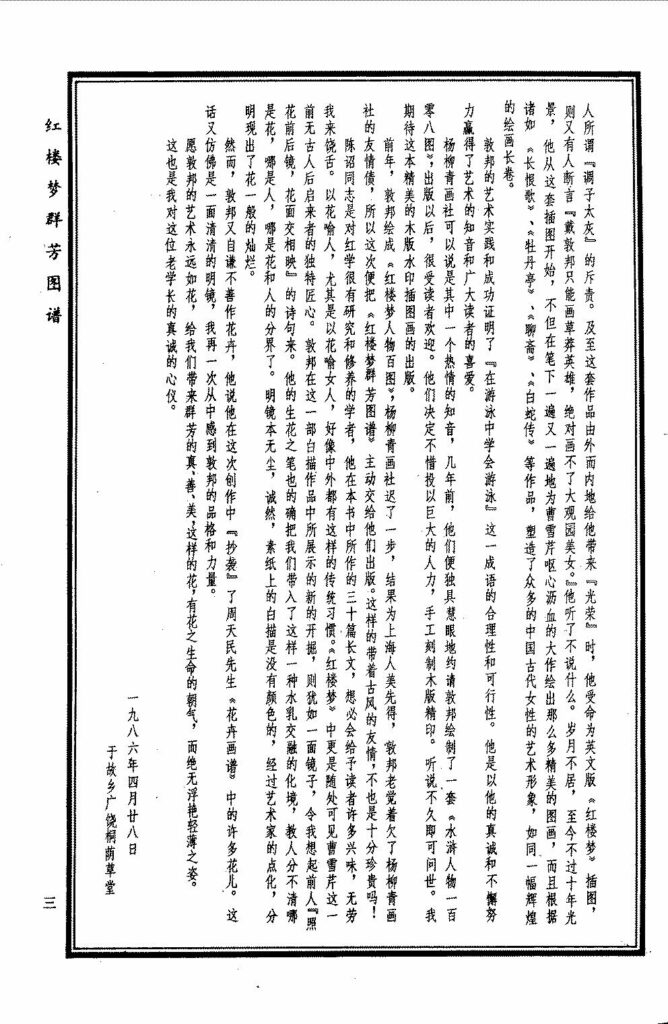
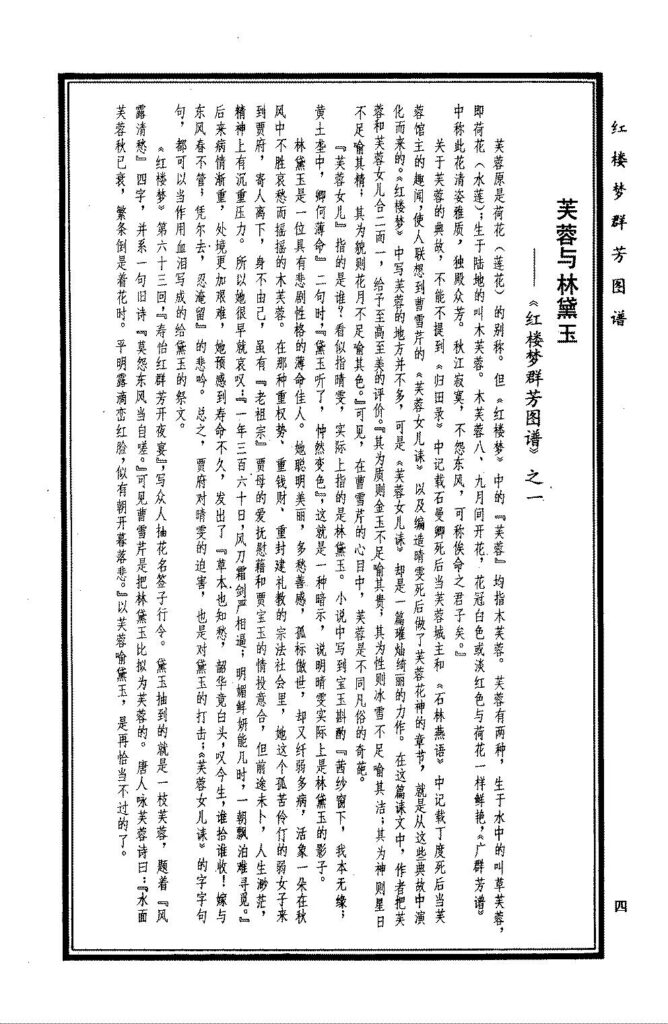
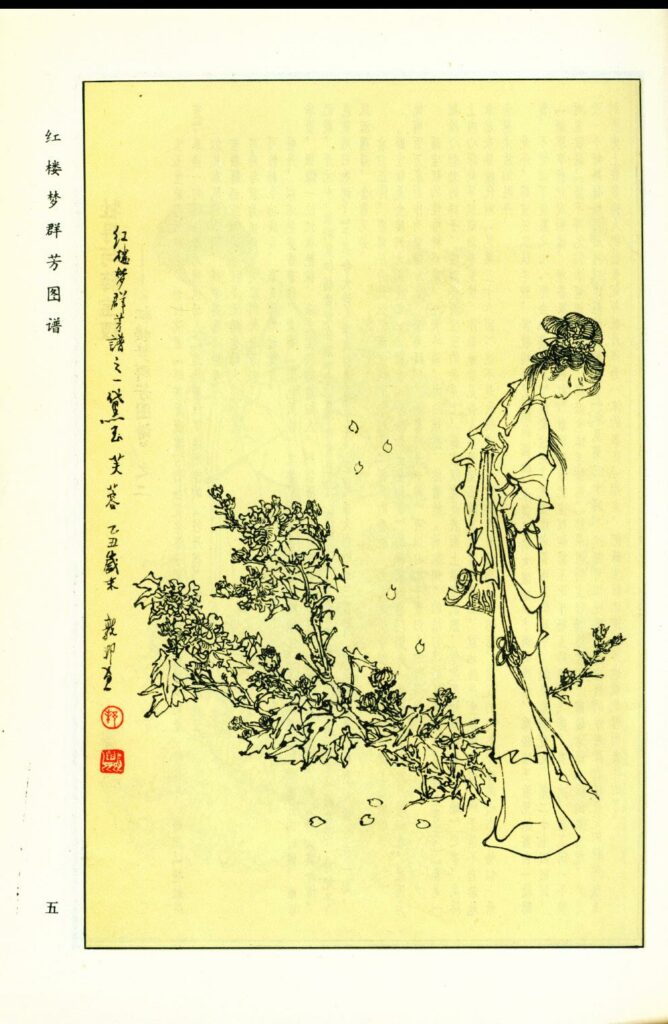


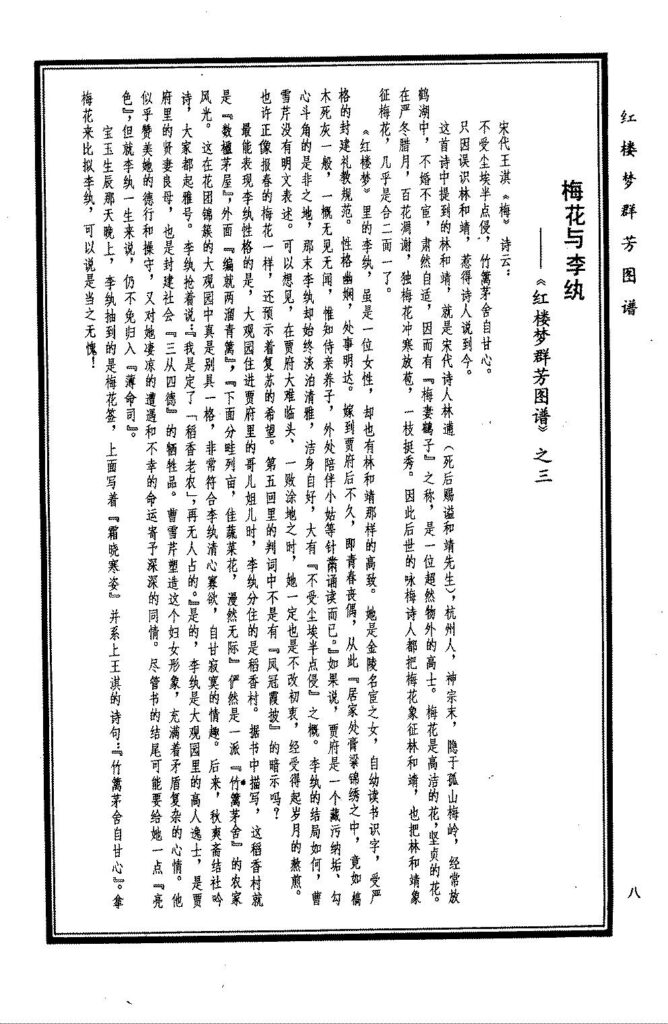








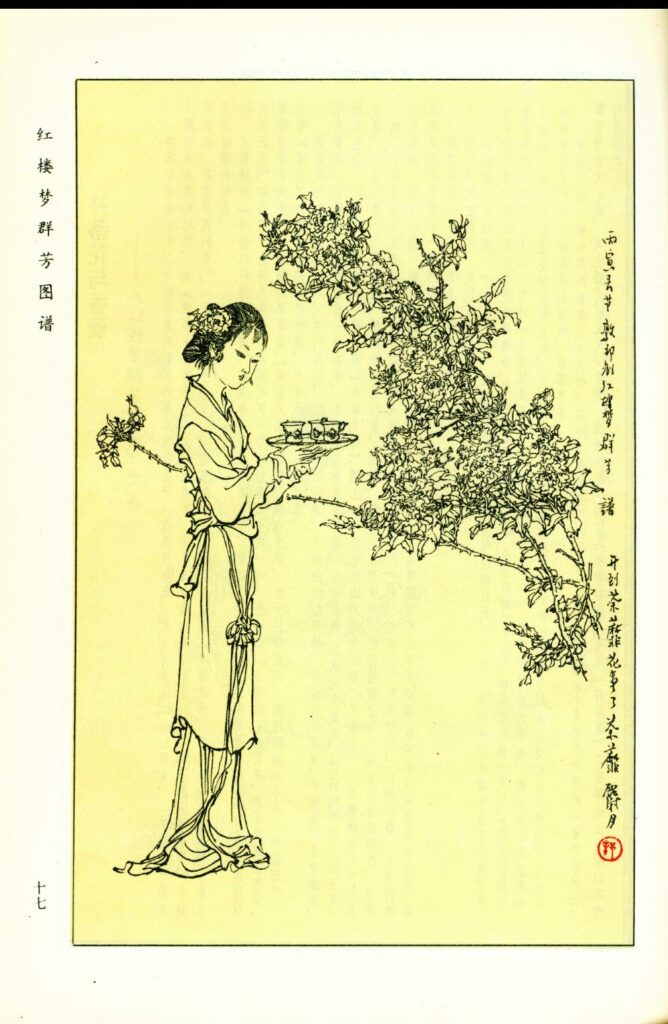




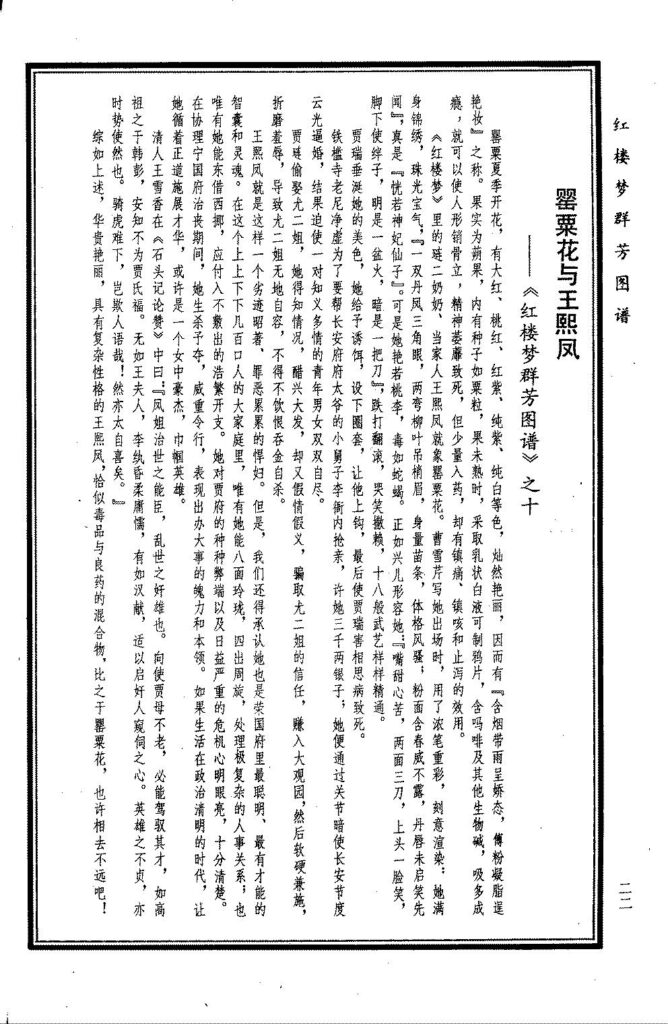












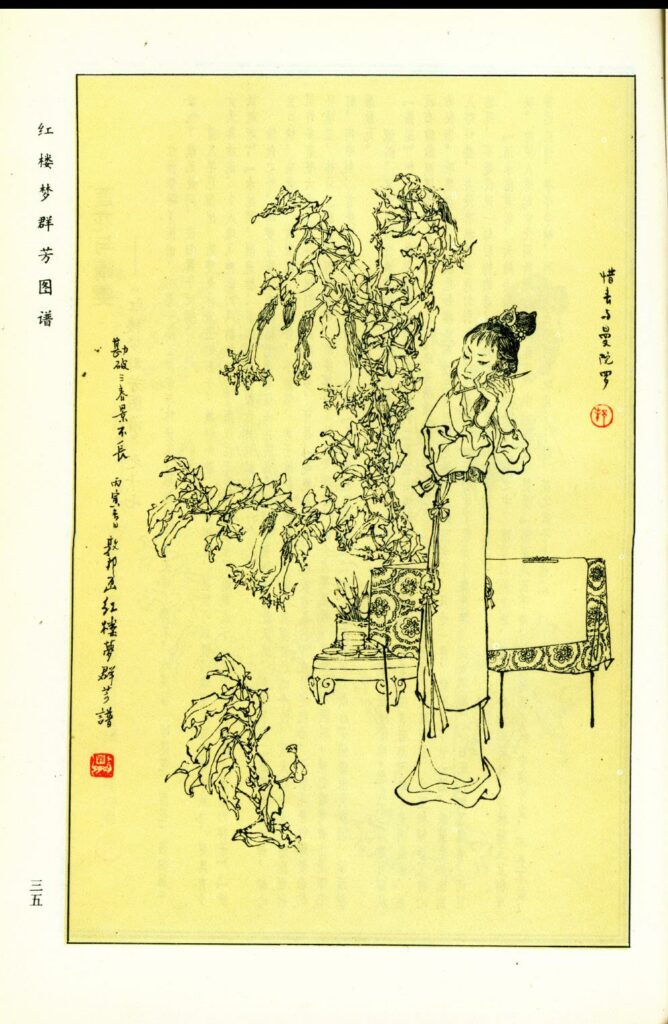


























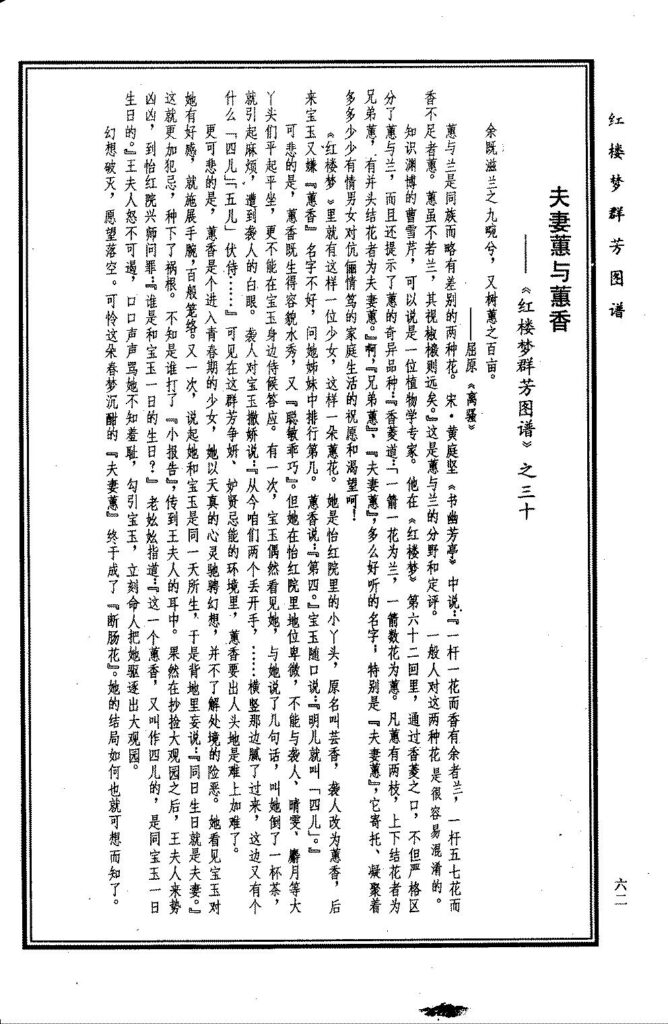




Culture文化 Masterpiece名著 69P 《红楼梦群芳图谱》
历史上的今天 ( 6 ):
- 2023年-02月-19日:Super Nintendo:Aoki Densetsu Shoot! 足球风云
- 2023年-02月-19日:Super Nintendo:Apocalypse II 启示Ⅱ
- 2023年-02月-19日:Super Nintendo:Another World 另一个世界
- 2023年-02月-19日:Super Nintendo:Animaniacs 卡通集锦
- 2023年-02月-19日:Super Nintendo:Animal Buranden - Brutal 动物武斗传
- 2023年-02月-19日:News新闻:2月19日,星期日,在这里每天60秒读懂世界! (1P)
可点 ➠ 2024年-02月-19日 ➠ 19 s ➠ ♥ 0

